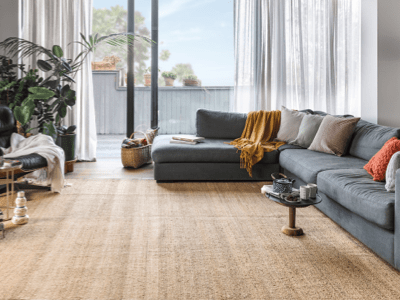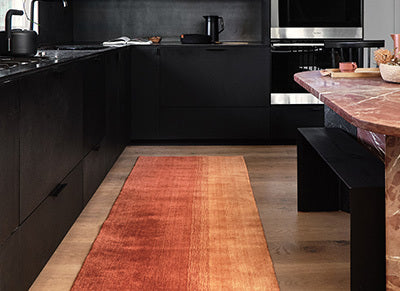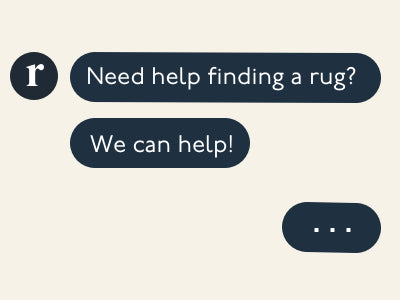






















One-of-a-kind lightly used rug, flatwoven by Zayane tribes in the Middle Atlas mountains of Morocco
Dimensions: 4'10" x 7'11" (147 cm x 242 cm)
Severinus has been professionally cleaned; age-related wear and natural inconsistencies are inherent in these unique, handcrafted vintage rugs
Rug Type:
-
Flatweave Rugs
Reversible rugs without pile, also known as kilims, made by hand-weaving horizontal weft yarns through vertical warp yarns
Age:
-
Lightly Used
Typically between 5-20 years old
Main Color:
- Multicolor
- Moroccan rugs don’t come with a key. As with any painting or poem, their motifs have many subjective interpretations. Originally made for personal use, these rugs took months to weave, documenting a shifting tide of events and emotions in the weaver’s life
- Stripes—a simple and timeless classic
- A simple, but classic design—zig-zag patterns represent water as a vital element in life
Zayane, also known as Zaiane or Izayen, refers to a confederation of tribes whose tribal territory included the town of Khenifra. Intended for bedding and floor covering, Zayane rugs have a long, often red pile. Woven from the back in a reverse pile technique, these rugs only reveal their design on the front after the pile has been gently worn down from use.
Material DetailsWool, a staple in Moroccan rug design, was considered almost sacred to the Amazigh (Berber) people, whose nomadic lifestyle included sheep and goat herding. In addition to being available, wool is durable, long-lasting, and soft—so it’s super comfy to walk and relax on. In this piece, the wool pile is knotted onto a strong cotton foundation, prized for its sturdiness.
- Dust and dirt that accumulate in your rug can erode the fibers over time. The best way to combat this is to take your rug outside and give it a good shake once a week. Depending on how large it is, you may need to recruit a friend to help. Also, be sure to get a rug pad—this helps to preserve your rug in spite of dirt.
- If shaking it out isn’t possible, you can vacuum it instead—just be cautious, and don’t use a rotary vacuum, because it can damage the fibers. Once or twice a month, use the suction attachment gently, from side to side. Once or twice a year, flip your rug over and vacuum the back.
- Once a year, let it sunbathe. Hang it in the sun for a few hours when it’s hottest, and flip it over midway through, to expose both sides to direct sunlight. This sun-bleaching helps further sanitize the wool. It’s a natural method to bleach and deodorize it.
- To ensure equal wear and protect against walk patterns, change your rug's direction periodically. You can also flip your rug upside-down once in awhile, and use it like that for a bit. With Moroccan rugs, the back is typically as nice as the front.
- Every 3-5 years, we recommend getting your rug professionally hand-washed with a Moroccan rug expert. Please do not take it to get steam or dry cleaned—this will almost certainly damage the rug! Hand-washing requires the use of a pH-balanced shampoo, worked into the rug by hand with a soft-bristled brush, before being rinsed thoroughly. This process should be repeated a few times.
- In case of spills:
- Blot the spill until it is dry, but do not add liquid. Consult an Oriental rug specialist immediately for cleaning. Adding liquid can make it harder to remove stains, and can even extend them further. This is because moisture travels along the fiber, so in rugs with horizontal fibers (like flatweaves), it can get trapped.
Order A Sample
Severinus - Rug Sample
Size 12" x 12"
Free shipping & return
Recently Viewed
Severinus Moroccan Kilim Rug
Buy One Rug, Get One 50% OFF with code RUGBOGO50—Hurry, BOGO sale ends 12/25! Excludes rug pads and custom rugs.
![]() Free Shipping
Free Shipping
![]() Easy Returns
Easy Returns
One-of-a-kind lightly used rug, flatwoven by Zayane tribes in the Middle Atlas mountains of Morocco
Dimensions: 4'10" x 7'11" (147 cm x 242 cm)
Severinus has been professionally cleaned; age-related wear and natural inconsistencies are inherent in these unique, handcrafted vintage rugs
- Moroccan rugs don’t come with a key. As with any painting or poem, their motifs have many subjective interpretations. Originally made for personal use, these rugs took months to weave, documenting a shifting tide of events and emotions in the weaver’s life
- Stripes—a simple and timeless classic
- A simple, but classic design—zig-zag patterns represent water as a vital element in life
Zayane, also known as Zaiane or Izayen, refers to a confederation of tribes whose tribal territory included the town of Khenifra. Intended for bedding and floor covering, Zayane rugs have a long, often red pile. Woven from the back in a reverse pile technique, these rugs only reveal their design on the front after the pile has been gently worn down from use.
Material DetailsWool, a staple in Moroccan rug design, was considered almost sacred to the Amazigh (Berber) people, whose nomadic lifestyle included sheep and goat herding. In addition to being available, wool is durable, long-lasting, and soft—so it’s super comfy to walk and relax on. In this piece, the wool pile is knotted onto a strong cotton foundation, prized for its sturdiness.
- Dust and dirt that accumulate in your rug can erode the fibers over time. The best way to combat this is to take your rug outside and give it a good shake once a week. Depending on how large it is, you may need to recruit a friend to help. Also, be sure to get a rug pad—this helps to preserve your rug in spite of dirt.
- If shaking it out isn’t possible, you can vacuum it instead—just be cautious, and don’t use a rotary vacuum, because it can damage the fibers. Once or twice a month, use the suction attachment gently, from side to side. Once or twice a year, flip your rug over and vacuum the back.
- Once a year, let it sunbathe. Hang it in the sun for a few hours when it’s hottest, and flip it over midway through, to expose both sides to direct sunlight. This sun-bleaching helps further sanitize the wool. It’s a natural method to bleach and deodorize it.
- To ensure equal wear and protect against walk patterns, change your rug's direction periodically. You can also flip your rug upside-down once in awhile, and use it like that for a bit. With Moroccan rugs, the back is typically as nice as the front.
- Every 3-5 years, we recommend getting your rug professionally hand-washed with a Moroccan rug expert. Please do not take it to get steam or dry cleaned—this will almost certainly damage the rug! Hand-washing requires the use of a pH-balanced shampoo, worked into the rug by hand with a soft-bristled brush, before being rinsed thoroughly. This process should be repeated a few times.
- In case of spills:
- Blot the spill until it is dry, but do not add liquid. Consult an Oriental rug specialist immediately for cleaning. Adding liquid can make it harder to remove stains, and can even extend them further. This is because moisture travels along the fiber, so in rugs with horizontal fibers (like flatweaves), it can get trapped.






